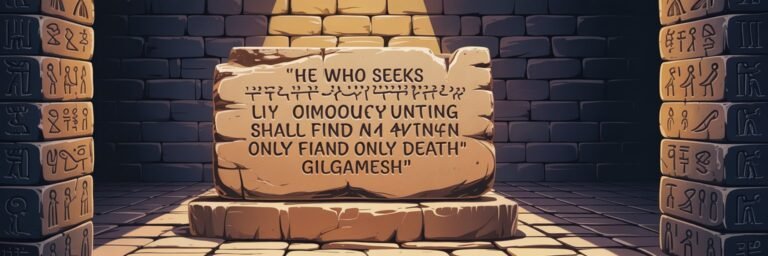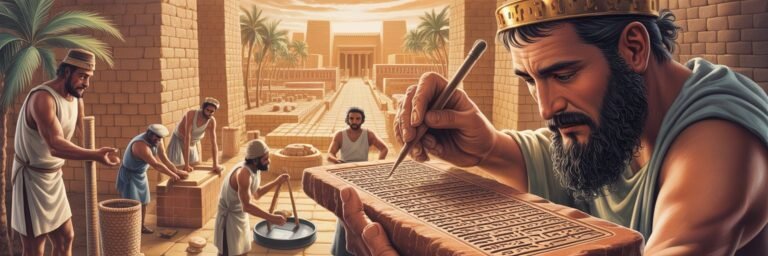INTRODUCTION
Thousands of years before Greece, Rome, or any modern civilization as we know it, there was the dawn of civilization in the land between rivers, the cradle of civilization—Mesopotamia. Today, we step across the threshold of time to unravel the encrypted past of this fascinating ancient civilization. We venture amidst its ancient clay tablets inscribed in enigmatic cuneiform, flow with its epic tales of mighty kings and daunting deities, and glide with the relentless Euphrates and Tigris, narrating tales of forgotten might and wisdom. Thus begins our journey into the heart of Ancient Mesopotamia.
HISTORICAL BACKGROUND
Dating back to 4500 BCE, Mesopotamia’s historical roots are buried deep within the fertile floodplains of modern Iraq, northeastern Syria, southeastern Turkey, and southwestern Iran. This geographical region was no coincidence for the blossoming of civilization. The formidable flow of two legendary rivers, the Tigris and Euphrates, nurtured the first traces of urban life—the city-states of Uruk, Akkad, Babylonia, and Assyria.
Mesopotamia, “Land between the Rivers,” had three distinct eras—the Archaic period (6000-2900 BCE), the Classical period (2900-539 BCE), and the post-classical period (539 BCE-650 CE). These eras’ chronicles constitute an illustrious saga of remarkable kingdoms, scientific advancements, intricate governance systems, and voluminous literature.
THEORIES AND INTERPRETATIONS
Mesopotamia was a mosaic of diverse people, cultures, and ideas, prompting a spectrum of interpretations. Conventional thought, thanks to pioneering archaeologists like Sir Charles Leonard Woolley, views Sumer as the creator of the world’s first civilization. The Sumerians, they argue, laid the foundation for writing, law, and systematic agriculture.
Yet some historians argue that the Ubaid, predating the Sumerians, deserved credit for molding Mesopotamia into an urban civilization. According to the Ubaid hypothesis championed by Jane Moon, vast settlements and sophisticated temple architecture existed long before the Sumerians walked the plains of Mesopotamia.
MYSTERIES AND CONTROVERSARIES
Mysteries and controversies churn within history’s dusty pages, and Ancient Mesopotamia is no exception. The ancient Sumerians left a rich tapestry of stunning literature, like the Epic of Gilgamesh. Still, their sudden disappearance around 2000 BCE, replaced by the Akkadian speakers, remains one of history’s enigmatic puzzles.
Controversy also resides in deciphering Mesopotamia’s pantheon of gods, partly due to the inconsistent nature of cuneiform text. The debate over the god Enki or Ea, for example, has been debated for years among scholars. Some assert he had a prominent role in the Sumerian pantheon. Others contend his significance declined over time, eventually becoming secondary to the god Enlil.
SYMBOLISM AND CULTURAL SIGNIFICANCE
The cultural significance of Mesopotamia extended beyond its geographic boundaries and across the millennia. Its iconic symbols, like the ‘Ziggurat,’ embody the civilization’s religious and sociopolitical aspects. Ziggurats, massive step-pyramid structures, were seen as sacred gateways between Heaven and Earth, linking the divine with the temporal.
Moreover, Mesopotamia’s lasting contributions to law, mathematics, and literature illuminate human development’s early phases. The world’s oldest known written law code—Code of Hammurabi—resounds a shared modern emphasis on justice, with its principle “an eye for an eye.”
MODERN INVESTIGATIONS
Modern research on Ancient Mesopotamia has been a blend of traditional archaeology, enhanced by technology, and interdisciplinary cognizance. The invaluable work of historians and linguists over decades led to the deciphering of cuneiform, unlocking Mesopotamian history’s arcane secrets.
However, the unstable political climate of the Middle East often hampers archaeological research. Despite the setbacks, significant progress was made by the Oriental Institute of the University of Chicago with their ‘Digital Hammurabi’ project. Employing 3D imaging technology, this project aims to democratize access to cuneiform tablets, allowing anyone around the globe to inspect these incredible artifacts virtually.
LEGACY AND CONCLUSION
Ancient Mesopotamia’s legacy is etched deep within our modern existence—the basic units of time, the 360-degree circle, early forms of writing, and irrigation techniques. Swiss historian Jean Bottéro even ventured to claim that Western society “has in its unconscious structure a Mesopotamian basement.”
Despite the limited survival of tangible relics, the spirit and culture of Mesopotamia permeate modern cognition, influencing our concepts of justice, literature, and divinity. It serves as a reminder of mankind’s incredible capacity for ingenuity and resilience—a civilization that rose from marshy floodplains, flourished, and left an indelible imprint on the annals of human civilization. Therefore, the enigma of Ancient Mesopotamia transcends the confines of a historical epoch, transforming into a voyage that explores the fundamental roots of being human. The tale of Mesopotamia is, in essence, a reflection of our own journey.






